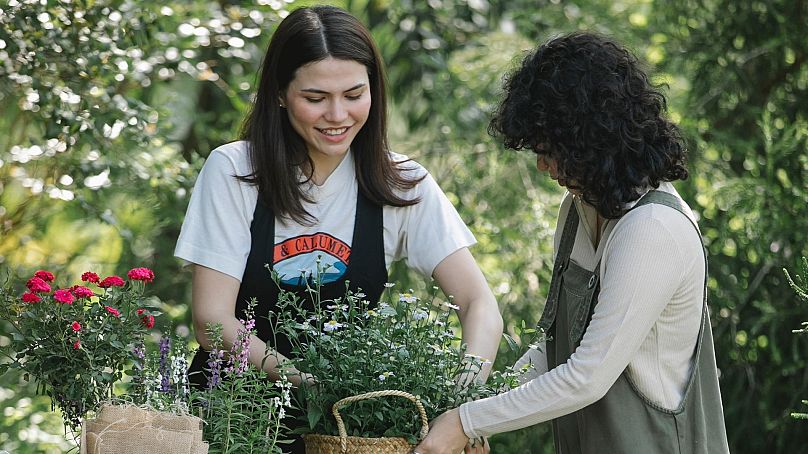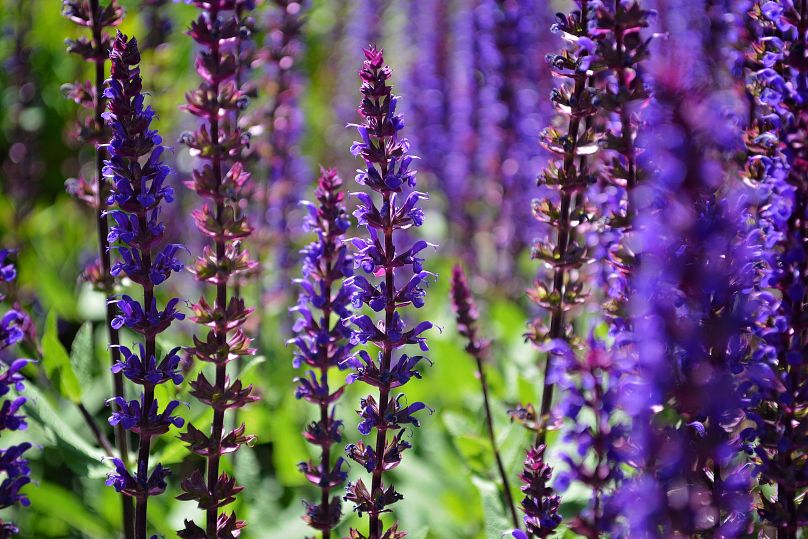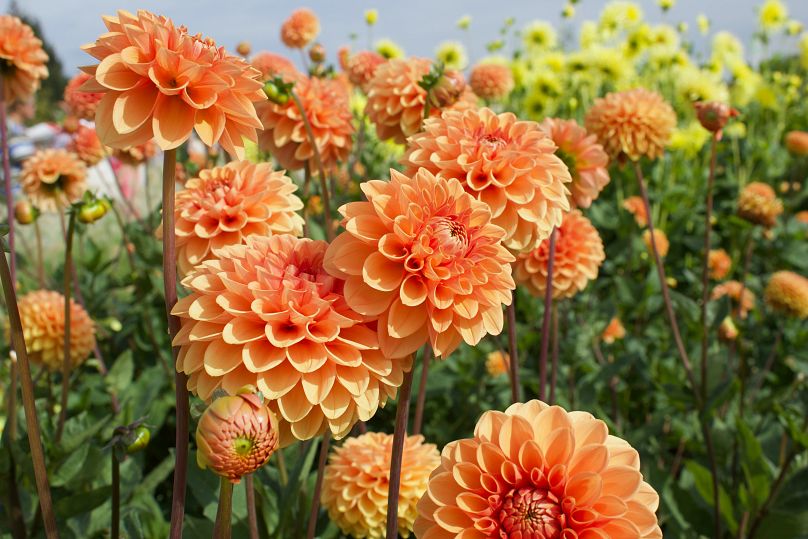Heatwaves are pushing gardeners to swap delicate flowers for more heat-resistant species.
Gardens all over Europe have been wilting amid the ferocious heatwave.
In countries that aren't used 40C, like the UK saw last week, gardens struggle to survive in extreme heat and drought.
With climate change now routinely pushing up temperatures, gardeners would be wise to think about adapting their shrubs to warmer weather. The sad news is that iconic delicate flowers like roses and poppies will likely have to be abandoned.
The good news: there are lots of heat-resistant plants and flowers that can be sown instead, to suit variations in climate all year round.
How to revive plants after a heatwave
The UK's Royal Horticultural Society (RHS) recommends putting dried-up plants in small pots into buckets of water for an hour or two. Once they have soaked up plenty of water, put them in the shade to drain.
For larger pots, give them a thorough watering and then allow them to drain.
Any trees or shrubs planted in the last couple of years are particularly vulnerable as their roots are less established. So make sure you keep them well-watered.
You don’t need to water your lawn, however, as grass is durable and will revive with the next good rainfall. Avoid cutting it, though, as longer grass survives better in the heat.
Which house plants can survive hot temperatures?
There are several heat-resistant species that make ideal house plants.
Succulents, which include cacti and aloes, have thick leaves which means they store up water and are very low maintenance.
Geraniums bring colour into the house and love the sun. Umbrella plants are also sun worshippers, although they need watering at least once a week.
Crotons have spectacular multicoloured foliage that improves with sunlight. Bear in mind that the soil should be kept moist but not wet.
Which garden plants can survive extreme heat?
The best way to ensure your garden survives heatwaves and droughts is to select the right kind of plants.
“The types of plants we should be trying are those from the Mediterranean climate zones of California, Chile and South Africa,” explains Anthony Hall, a specialist in drought-friendly plants at the Royal Botanic Gardens, Kew.
“Many of these are hardy in British winters and will cope with high summer temperatures.”
Plenty of heat-loving plants are already staples in British gardens. It is common to find cannas, salvias and dahlias, which all thrive in hotter temperatures but can also survive cold winters.
Salvias, which include the well known herb sage, are particularly popular. Several varieties have attractive flowers and bloom throughout summer.
They thrive in poorer, well-drained soils and can withstand temperatures into the 30s and as low as -40 C.
For trees, Mediterranean fan palms (Chamaerops humilis) are ideal. They cope well in extreme heat but are also content in temperatures as low as -13 C.
You can also try hollyhock (Hibiscus syriacus), a sun-loving flowering shrub that bursts into colour in late summer and autumn.
For summer bedding plants and flowers, opt for pelargoniums, sunflowers and cosmos.
Hall also suggests alliums to add a splash of colour. “Most need free-draining soil, but other than that they will grow in almost all conditions and love full sun,” he says.
Which plants don’t need much water?
Drought-resistant shrubs are capable of surviving hot, dry conditions. These species often have silvery or grey-green leaves that help reflect sunlight or a coating of fine hairs that traps moisture.
You can plant sea hollies (Eryngium species) in full sun. Hellebores and the false castor oil plant (Fatsia japonica) do well in dry shade.
Hall also recommends plants with narrow leaves like lavenders and rosemary, which reduce their water loss through transpiration.
When should I plant heat-resistant shrubs?
“Establishment is key,” says Hall. The best time to plant outdoors is in autumn while the soil is still warm.
It is also important to water newly-sown shrubs well. “This will ensure the plants are well established by the following summer,” he adds.
Young trees also need plenty of water. “Newly-planted trees will take many years to establish their roots and find moisture,” Hall says.
“Such trees can consume upwards of 20 litres of water each week, so it’s vital that we support them as well.”














